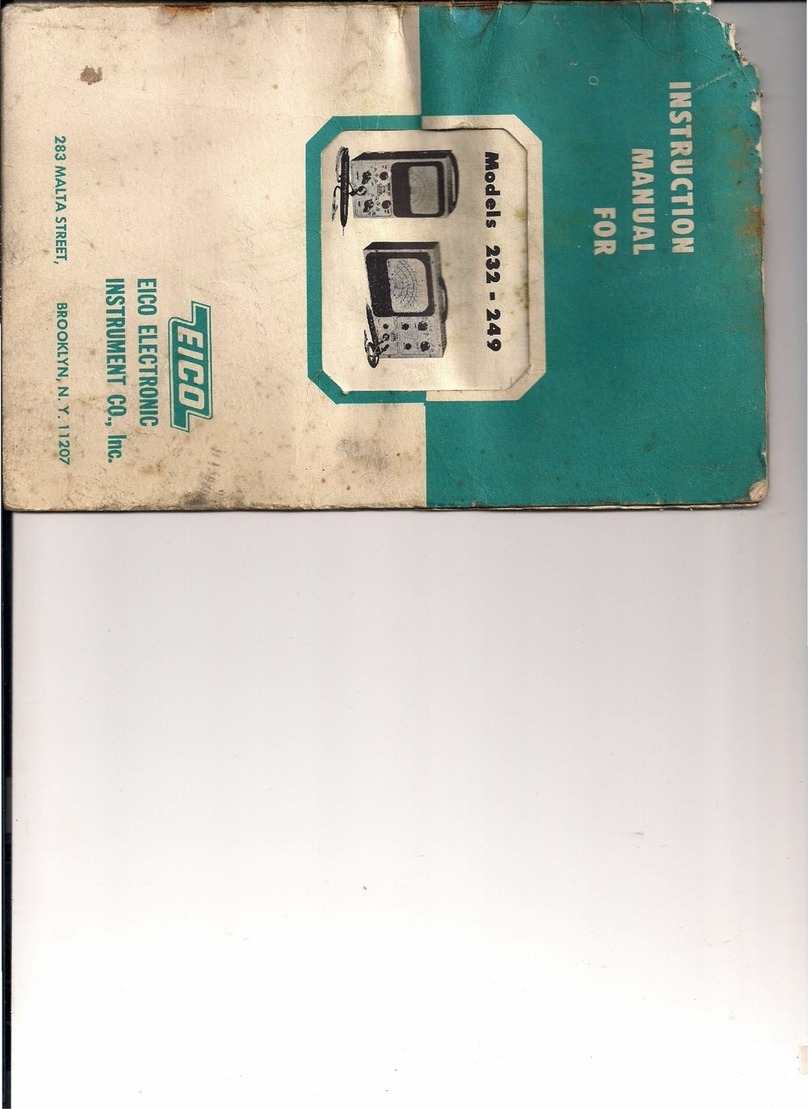
.L-
"·
or
.D'-'.l.l'
.l\.,i-1
.
.l
lVl~.:>
a.
Vertical
amplifier:
Frequency
response:
DC
to
8 MHz (+l, - 5 dB)
Sensitivity:
12
mV
per
cm
r.
m.
s.
Input
impedance:
1
megohm
shunted
by
35
pF
Calibration
voltage:
z
ener-controlled
200
mV
peak-to-peak,
±1%
Input
scale
attenuation:
. 05, .
5, 5,
and
50
volts/cm
b.
Horizontal
amplifier:
Frequency
response:
DC
to 1 MHz,
1-l,
-3
dB
Sensitivity:
17
mV
per
cm
r.
m.
s.
Input
Impedance:
1
megohm
shunted
by
35
pF
Ollibration
voltage:
zener-controlled
500
mV
peak-to-peak,
±
1%
Input
scale
attenuation:
. 05, . 5,
5,
and
50
volts/cm
c.
Sweep
r
anges
:
10-100 Hz,
100
Hz-
1 kHz, 1-10
kHz,
10-100 kHz,
plus
fixed
TV
vertica1(30
Hz),
and
horizontal
(7875 Hz).
d.
Intensity
modulation:
3
volts
r.
m.
s.
blanking
Input
impedance
2. 2
megohms
e.
Tube
complement:
l-12AZ7, l-12AU7, 2-6AU8, 2-12BY7,
3-6B
L 8; 3
silicon
rectifiers,
1
silicon
HV
rectifier,
2
zener
diodes,
5DEP1
CRT.
f.
Power
supply:
ll7
-
volts
AC,
approximately
140
watts
g.
Size:
12
1/2
high x 8 1/ 2
wide
x
17
1/2
deep
h.
Wei
ght:
27
lb
s.
1-
4.
CONTROLS AND
INPUT
TERMINALS
The
Model 465
has
its
controls
and
input
terminals
grouped
in
logical
arrangement
as
for
use.
All
controls
for
either
channel
are
vertically
grouped
on
each
side
of
the
front
panel,
th
e
sync
and
sweep
controls
are
in
the
middle
segment,
while
the
CRT
controls
are
grouped
alongside
the
CRT
screen.
a.
The
AC
pow
er
on/off
switch
is
located
on
the
SCALE
ILLUMination
control
and
is
operated
by
rotating
this
control
clockwise
from
the
OFF
position
.
This
also
turns
up
the
scale
illumination.
3





























